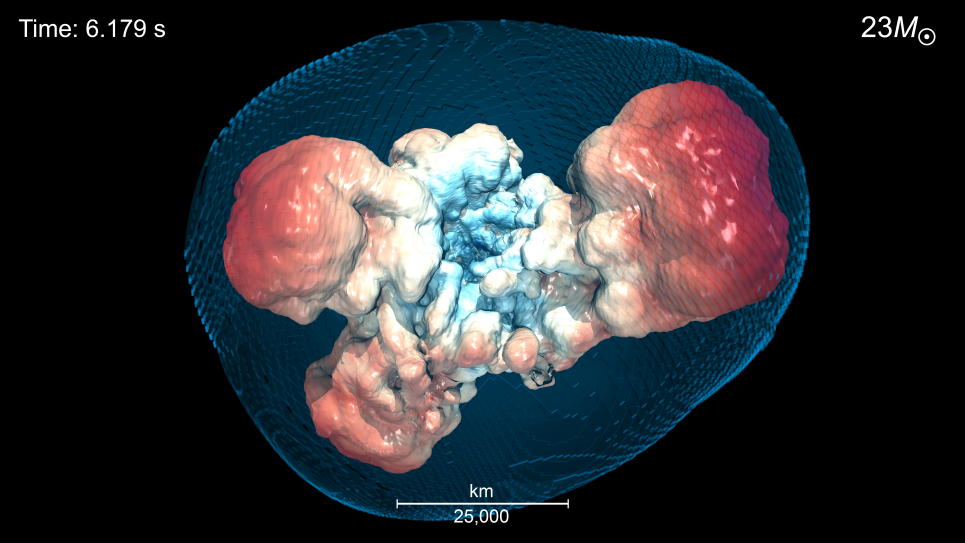
State-of-the-Art High-Resolution 3D Simulations of Core-Collapse Supernovae
The overarching goal of this INCITE project is to create, analyze, publish, and curate a large suite of state-of-the-art long-term 3D core-collapse supernova explosion simulations that will constitute the standard 3D model of core-collapse supernova explosions for years to come.
Core-collapse supernova explosions dramatically announce the death of massive stars; give birth to neutron stars and black holes; are the source of many of the elements of Nature; inject mass, energy, and momentum into the interstellar medium generate cosmic rays; and are one source of interstellar grains. They are central agents of change in the Universe and a core topic of theoretical astrophysics.
Most previous simulations were for short duration that did not allow one to witness the completion of the explosion. The codes were too slow and the computational resources too meager. But now, after more than sixty years of progress, we find ourselves at a pivotal time in the theory of core-collapse supernova when sophisticated 3D radiation/hydrodynamic codes, such as the team’s code Fornax, and high-performance resources such as Aurora and Polaris are converging to enable many, long-duration, and high-resolution simulations of the explosion of the cores of a wide spectrum of massive stars.
This will be the culmination of a decades-long quest to understand the mechanism of explosion and the mapping between massive-star progenitors, their observational signatures, and their larger astronomical products and impact. All the simulations will be unprecedented, as will be their scientific impact, and they will be analyzed to derive the explosion energies, residual neutron star properties (e.g., mass, kicks, and spins), ejecta debris fields, nucleosynthesis, neutrino and gravitational-wave signatures, and physical and progenitor correlations and mappings.